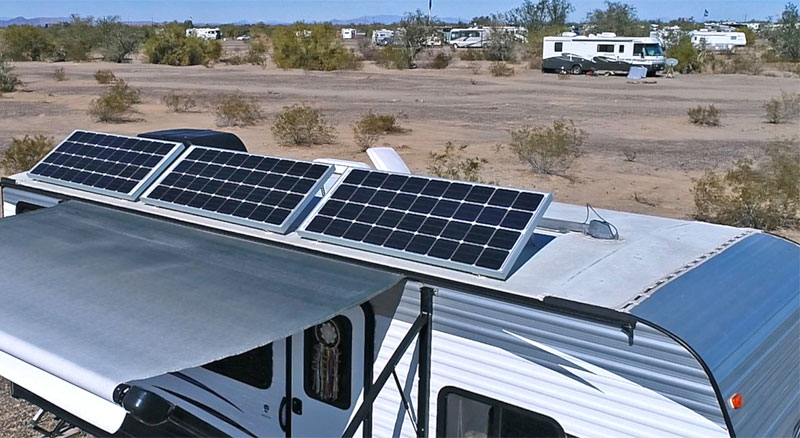For RV, solar panels are an investment besides lithium motorhome batteries.It seems not a cost effective consideration at the beginning. Luckily, most road trips will provide plenty of sunlight for them to soak up.
Many of the disadvantages you’ve heard about solar panels are myths. Some of them, however, have truth to them. Read on to separate the fact from fiction as far as RV solar panels are concerned.

Why Are RV Solar Panels Worth the Cost?
Despite common belief, solar panels work great in colder areas with less sunlight. In fact, they operate more efficiently in colder climates than they do in warm ones. Germany, for instance, produces the third most solar energy out of any country despite both its smaller size and its temperate climate (it gets 10 percent fewer annual hours of sunlight on average than Seattle).
Though solar panels don’t produce as much energy on cloudy days, they still produce around 25 percent as much energy as they would on a sunny one. Furthermore, regions like the Pacific Northwest that are known for getting less sunlight still get nearly as many hours of sunlight year-round, which is what actually matters.
The first silicon solar panel effective as an energy source was created by Bell labs in 1954 with an efficiency of just six percent. Since then, technology has allowed us to create solar panels with over 30 percent efficiency. During that time span, and especially in the last 10 years, the cost per watt of energy has plummeted.
A decade ago, a standard, six-kilowatt solar panel would cost nearly $53K (more than the average RV)! Now, that same solar panel costs under $19K, and that’s before a federal tax credit is applied. In other words, solar panel technology is advancing in much the way we’ve seen computers, TVs, and phones advance in recent years. They’re continuing to become cheaper despite rapid advances in how powerful they are.
RV solar panels almost never require anything other than a light surface cleaning. Generally, you can drive with them located in the same spot throughout your entire journey. If you do need to move them, they are light and portable, so readjusting them or taking them down is also hassle-free. This makes them great for dry camping or boondocking.